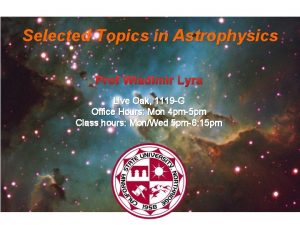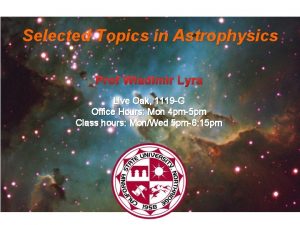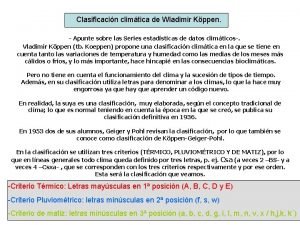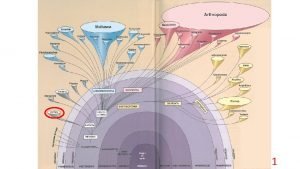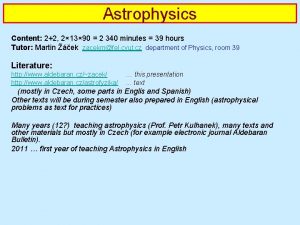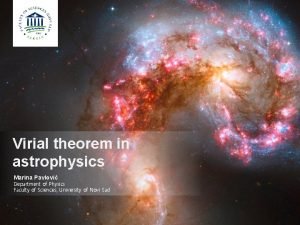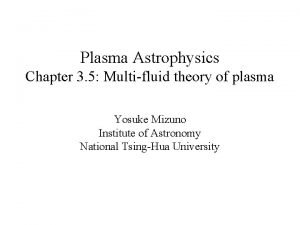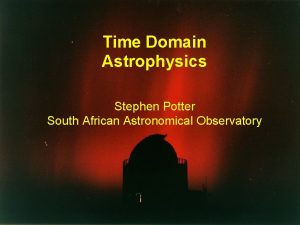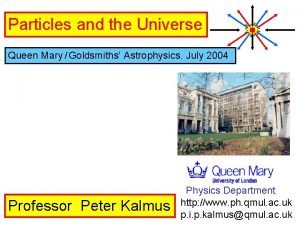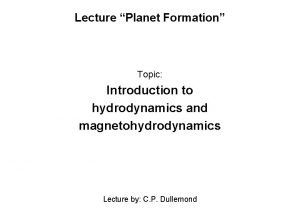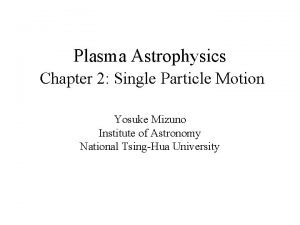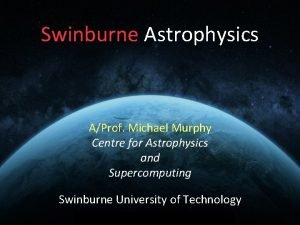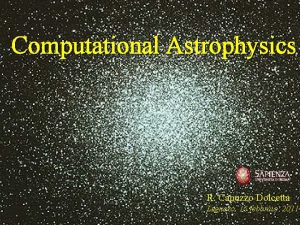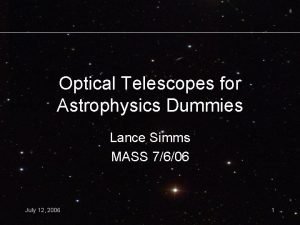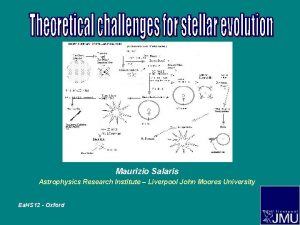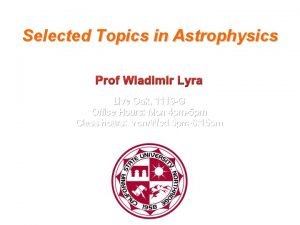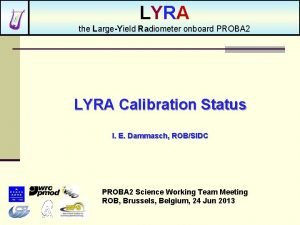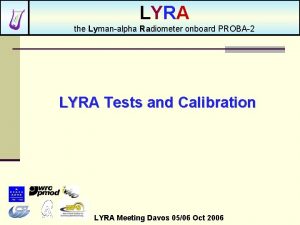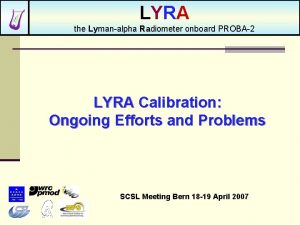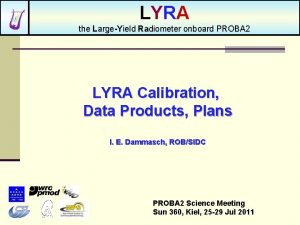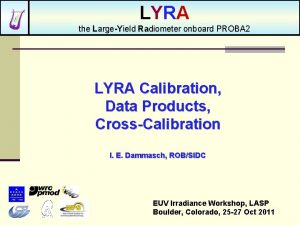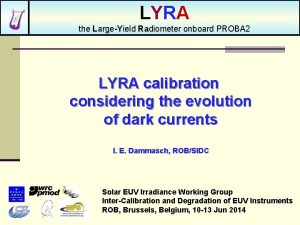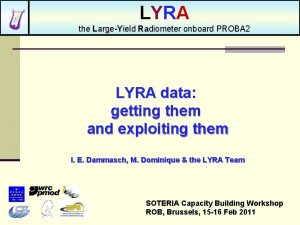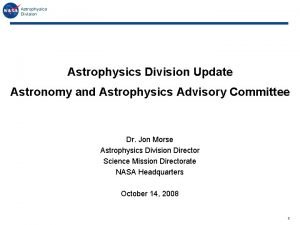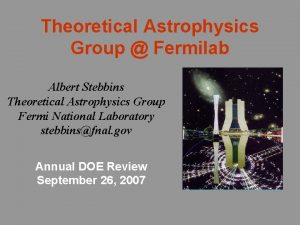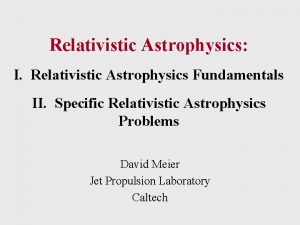Selected Topics in Astrophysics Prof Wladimir Lyra Live


























- Slides: 26

Selected Topics in Astrophysics Prof Wladimir Lyra Live Oak, 1119 -G Office Hours: Mon 4 pm-5 pm Class hours: Mon/Wed 5 pm-6: 15 pm


Solar evolution in the main sequence Bahcall et al. 2001


Evolutionary tracks Schaller et al. (1992)

Evolution away from main sequence Between 1 and 2 At 3

Hydrogen gone in the core Star stops producing energy. The star contracts and heats up. Eventually, the temperature becomes high enough to burn hydrogen around the Helium core Hydrogen shell burning The star reaches the subgiant branch

Red giant branch Hydrogen shell burning involves: More fuel than in MS-hydrogen burning Higher temperatures (thus more efficient) A lot more of energy is being produced than in the MS-phase. The star gets very luminous and swells The expansion cools the outer layers. The star becomes a red giant.


What happens to the inert Helium core? Hydrogen shell burning

What happens to the inert Helium core? It keeps contracting and heating At some point the density is so high it goes degenerate A phase transition has occured The core stops behaving like a gas and starts behaving more like a solid Ideal Gas Degenerate Matter Temperature rises, pressure rises Temperature falls, pressure falls If temperature rises or falls, pressure couldn't care less Radiative loss → cooling → less support against gravity → contraction Radiative losses can continue indefinitely The degenerate core is stable

Helium Fusion The inner degenerate Helium core is stable But the outer Helium core keeps contracting and heating At the tip of the Red Giant Branch, when the temperature reaches 100 million K, HELIUM FUSION begins Triple Alpha 3 He → C + energy (C + He → O + energy)

The Helium Flash Under normal (non-degenerate) conditions … Ideal Gas Nuclear reactions start Heating → Expansion → Cooling = Less nuclear reactions Cooling → Contraction → Heating Thermostat keeps nuclear reactions “tuned” Controlled fusion

The Helium Flash Fusion ignition in degenerate matter is a bomb ready to explode Ideal Gas Degenerate Matter Nuclear reactions start Heating Star does not expand Heating → Expansion → Cooling = Less nuclear reactions Cooling → Contraction → Heating Thermostat keeps nuclear reactions “tuned” Controlled fusion Nuclear burning increases More heating No thermostat Runaway temperature rise Runaway fusion

The Helium Flash Fusion ignition in degenerate matter is a bomb ready to explode No thermostat! Core just gets hotter and hotter Runaway Helium burning: 100 billion times the Solar output in just a few seconds Helium Flash Yet, nothing is seen Why? The energy is ALL used to lift the degeneracy (i. e. , to “melt” the degenerate core back into a normal gas) Helium then burns steadily in a core of normal gas

The Horizontal Branch Helium burning in the core Hydrogen shell burning In the HR diagram, the star sets in the Horizontal Branch The Horizontal Branch is the Helium Main Sequence

Helium exhausted in the core The Carbon-Oxygen core contracts and heats up. Helium shell burning More energy is available, the star swells and becomes a red giant again The star reaches the Asymptotic Giant Branch

Thermal pulses in AGB stars A series of Helium flashes

PLANETARY NEBULA The gracious death of low mass stars




White dwarfs are the exposed degenerate core of the star White dwarfs have planetary dimensions. . . Types of white dwarfs … and they do little but cooling.

White dwarfs are the exposed degenerate core of the star No energy production Supported by degenerate pressure 10 15 Cooling takes a long time yr to cool down to background temperature The universe is not old enough to have black dwarfs Coldest white dwarfs ~5000 K. Sirius A (Main Sequence star) and Sirius B (White Dwarf)

Evolution of a low mass star

Post-Main Sequence Evolution - Timescales
 Wladimir lyra
Wladimir lyra Lyra
Lyra Wladimir köppen clasificación climática
Wladimir köppen clasificación climática Lyra x1
Lyra x1 Chondrocladia lyra
Chondrocladia lyra Texter om sommaren
Texter om sommaren Astrophysics syllabus
Astrophysics syllabus Rit astrophysics
Rit astrophysics Virial theorem in astrophysics
Virial theorem in astrophysics Astrophysics equations
Astrophysics equations Advanced telescope for high energy astrophysics
Advanced telescope for high energy astrophysics Time domain astrophysics
Time domain astrophysics Queen mary astrophysics
Queen mary astrophysics Mhd equations
Mhd equations Astrophysics
Astrophysics Swinburne astrophysics
Swinburne astrophysics Astrophysics
Astrophysics Astrophysics for dummies
Astrophysics for dummies Nasa astrophysics advisory committee
Nasa astrophysics advisory committee Maurizio salaris
Maurizio salaris Quizzlet live
Quizzlet live Live healthy live happy
Live healthy live happy R-selected species
R-selected species Neither of my two suitcases are adequate for this trip
Neither of my two suitcases are adequate for this trip Weights of the backpacks of first graders on a school bus
Weights of the backpacks of first graders on a school bus Qualitative vs quantitative data analysis
Qualitative vs quantitative data analysis Dreamweaver php extensions
Dreamweaver php extensions
